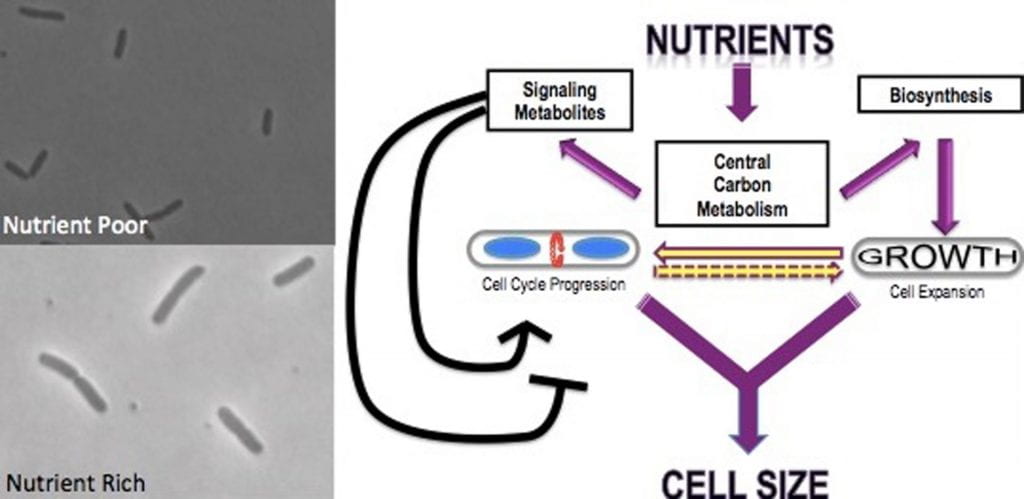Environmental determinants of antibiotic resistance & tolerance

Bacteria possess a chameleon-like ability to adapt to changes in nutrient availability, osmotic stress, and pH. Growth in nutrient poor conditions leads to accumulation of the small molecule ppGpp. ppGpp is implicated in antibiotic tolerance and the development of persister cells that survive for long periods in the presence of bacteriocidal compounds. We are identifying ppGpp-dependent mechanisms underlying tolerance to antibiotics targeting DNA replication, cell wall synthesis, and protein synthesis. We are also investigating a newly identified link between environmental pH and resistance to cell wall active drugs.
Nutrients, cell growth, cell size, and cell cycle progression

Nutrient availability is a primary determinant of cell size. Single celled organisms cultured in nutrient rich medium can be up to three times the size of their counterparts cultured under nutrient poor conditions. Understanding the regulatory circuits and molecular mechanisms responsible for coordinating cell growth and cell size with nutrient availability and cell cycle progression is a primary objective of the lab.
Spatial and Temporal Control of Cell Division
In bacteria, cell division is initiated by assembly of the tubulin-like cytoskeletal protein FtsZ into a ring-like structure at the future division site. The FtsZ ring serves as a scaffold for assembly of the division machinery, guiding cell wall synthesis during cytokinesis. Changes in FtsZ assembly dynamics ensure that bacterial cells divide in the right place and at the right time. Identifying the regulatory factors coupling FtsZ assembly and division to cell growth and the cell cycle is a major focus of our research.